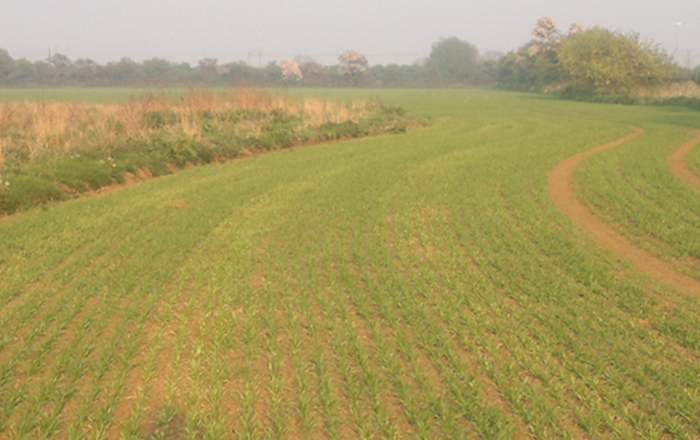15 May 2025
Addressing nutrient deficiencies in drought conditions

As phosphorous, potassium, magnesium and manganese deficiencies become evident in spring crops, Teagasc Soil and Plant Nutrition Specialist, Veronica Nyhan plots a course for identification of each and treatment.
Soil moisture deficit (SMD) is a measure of the amount of rain that would need to be added to a soil to bring it back to field capacity (SMD=0). This is the soil water holding point at which crops grow best. In essence, a high SMD indicates low available soil water.
Following a very dry start to the month of May, national SMDs currently range between 26mm and 47mm. At such levels, there is some restriction to growth becoming evident on very free draining soils, the soil type commonly associated with arable production.
Looking at the weather projections for the week ahead, SMDs will continue to increase across the country. Met Eireann predicts the SMDs in the coming week will generally increase to between 30mm and 60mm. Once SMD reaches >50 mm, the ground will become hard, and growth will become restricted across all soil types. Above >75mm, growth will begin to cease as the soil is in drought conditions.
Deficiencies
Deficiencies that are currently visible in spring crops include:
- Phosphorus (P), characterised by purple red colours on older leaves and poor tillering,
- Potassium (K), shows as yellow tipping, starting on the older leaves that moves down the leaf margins. The affected leaf feels like paper and eventually turns white,
- Magnesium (Mg), recognised by yellow striping down the older leaves between the leaf veins,
- Manganese (Mn), similar striping to Mg but on newer leaves and spotting between veins. Manganese deficiency is evident in affected fields, by a “wheeling” effect (visible in the featured picture above),
- As soils continue to dry and with no rain predicted, other deficiencies such as Zinc (Zn) and Copper (Cu) are inevitable in fields with a history of such deficiencies.
Action
While rain would alleviate a lot of the deficiencies currently being observed in spring cereals, if there is a history of a specific nutrient deficiency problem associated with a site, or a nutrient deficiency presents in the crop and the symptoms persist, action may be required in the form of foliar applications.
Correct identification of the deficiency is important. Soil analysis can help to identify high risk areas for most of the trace elements. However, for some, such as Mn, tissue analysis can be more accurate.
Research shows that there is no economic justification for the addition of trace elements mixes prophylactically, where no deficiency is evident. Additionally, due to the small quantities that some of these are required in by the crop, adding trace elements unnecessarily could have a negative impact on crop performance.
Applying foliar trace element treatments in hot and dry conditions requires some careful considerations. The following are some tips for the foliar applications of trace elements to crops:
- Apply early in the morning or late in the evening – stomata are open and temperatures are generally cooler, reducing evaporation and preventing leaf scorch.
- Check the weather forecast for suitable spray conditions. Avoid applying immediately before rain and in very high or low humidity. Avoid applying in midday sun.
- Ensure good leaf coverage.
- Choose appropriate formulations – chelated compounds or inorganic formulations, that can be absorbed quickly and efficiently through the leaves. Although more expensive, these may be more effective in drought conditions compared to inorganic salts.
- Apply label rates – too much trace element solution in dry conditions can stress the crop further.
- Don’t mix incompatible products; some trace element solutions or pesticides can react negatively with each other, reducing efficacy or even causing damage to the plant. Always check compatibility before mixing treatments. In a severe deficiency situation, it is advisable to address the deficiency before applying further pesticide products.
Tillage Edge podcast
John Pettit, a Teagasc Tillage Advisor in Wexford, and Ciaran Collins, a Teagasc Tillage Specialist, join the Tillage Edge this week to discuss the key agronomy actions needed over the next week to 10 days.
Both John and Ciaran acknowledge the impact of the dry spell and note that, while the weather has reduced immediate disease pressure, the season is far from over.
Diseases such as mildew and rust could still become an issue, and they explain that adjustments to crop protection programmes may be needed on many farms.
Listen in below:
